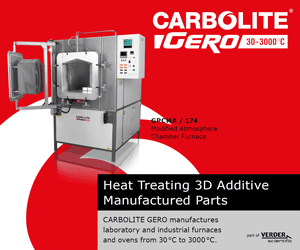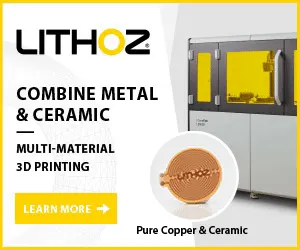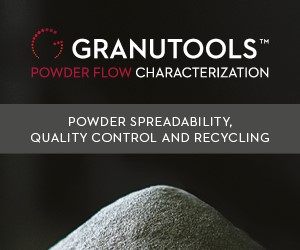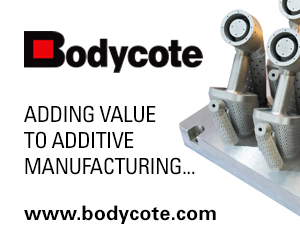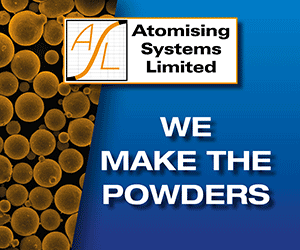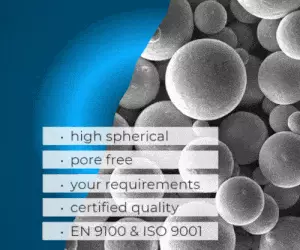Metal Additive Manufacturing, Vol. 4 No. 4 Winter 2018
Prefer a PDF download? Click here
In addition to the latest industry news, this 164-page issue of Metal Additive Manufacturing magazine includes the following exclusive features:
Binder Jet metal Additive Manufacturing: Process chain considerations when moving towards series production
With the launch of a number of new systems targeting the series production of components, Binder Jetting is generating a high level of interest in the world of metal Additive Manufacturing and beyond.
In this report, Sebastian Boris Hein, Claus Aumund-Kopp and Bastian Barthel of Fraunhofer IFAM review the main process considerations and production steps in the Binder Jetting of metals as related to series production, highlighting both the advantages of the technology and the challenges that it poses.
View online | Download single page PDF | Download double page PDF
Simple and standardised X-ray CT testing in metal Additive Manufacturing
X-ray Computed Tomography (CT), also widely known as MicroCT, is a proven method for not only checking the structural integrity of additively manufactured (AM) parts – for example for unwanted porosity – but also for checking a build’s dimensional accuracy.
The main advantage of the technique is, of course, the non-destructive nature of the assessment; however, there are also many misunderstandings about the capabilities and complexity of the technology.
Prof Anton du Plessis and Dr Jess M Waller review the application of CT testing in relation to metal AM and highlight the advantages of a move towards standardised test methods.
View online | Download single page PDF | Download double page PDF
Formnext 2018: The global AM industry addresses ‘the bigger picture’ for true industrialisation
From November 13-16, 2018, the Additive Manufacturing world congregated in Frankfurt, Germany, to attend the year’s final and arguably most significant international exhibition on the technology. Occupying more than 37,000 m2 of floor space, Formnext 2018 attracted nearly 27,000 visitors – an increase of more than 25% on the previous year – and over 600 global exhibitors.
In this report, Metal AM’s Emily-Jo Hopson covers some of the news and developments out of Formnext, and looks at how they reflect an industry turning its focus toward productivity and efficiency for true industrialisation.
View online | Download single page PDF | Download double page PDF
Formnext 2018: International forum reviews standards for Additive Manufacturing
Organised by the U.S. Commercial Service in Dusseldorf, Germany, the Additive Manufacturing/3D Printing Standards Forum took place on November 14, 2018, in Frankfurt, Germany, at the Formnext trade fair.
As Dr Georg Schlieper reports, the event brought together leading experts from industry, research institutions, standards developing organisations, professional societies and government to address key themes focused on standards development in AM technologies. This included progress on international standards development for AM and how the use of these standards can help the industry achieve its potential.
View online | Download single page PDF | Download double page PDF
Formnext 2018: How the growth of metal AM is driving changes to the metal powder landscape
Whilst machine builders once again dominated Formnext 2018, the world’s metal powder producers have also become an increasingly important part of the event as the industry evolves towards serial production.
In this report, Toby Tingskog highlights some of the major events in the world of AM-related metal powder production in 2018, along with a number of trends that became apparent as a result of conversations with producers in the exhibit hall.
View online | Download single page PDF | Download double page PDF
How residual stress can cause major build failures, and what you can do to prevent it
Anyone who starts out on their own evaluation of the opportunities presented by metal Additive Manufacturing will soon stumble across the phrase ‘build failure’. Whilst there can be many causes for a failed build, which of course comes at a significant cost in terms of both material wastage and machine time, residual stress is often at the top of the list.
As Olaf Diegel and Terry Wohlers explain, residual stress can be both anticipated and managed though a combination of basic design rules, process settings and post-build heat treatment.
View online | Download single page PDF | Download double page PDF
Arcast: Applying advanced melting and atomisation expertise to the production of a new generation of metal powders
Arcast Inc., based in Oxford, Maine, USA, is today emerging as a leader in advanced melting and metal powder atomisation technologies, with a diverse international customer base.
As Metal AM magazine reports, the company provides processing solutions for some of the most challenging alloys, as well as offering through its new venture, Arcast Materials, a range of commercially-produced metal powders.
View online | Download single page PDF | Download double page PDF
Additive Manufacturing in Aerospace: Highlights from the AMA 2018 international conference in Bremen
Much of metal Additive Manufacturing’s recent success has been driven by the aerospace sector, where demanding applications have propelled progress in all aspects of the technology, from process stability and quality to part design and materials. Together, these advances are enabling metal AM to meet the next challenge: that of wider serial production.
As the University of Bremen’s Christian Kober reports, it was this challenge that formed the central theme at this year’s International Conference on Additive Manufacturing in Aerospace.
View online | Download single page PDF | Download double page PDF
Euro PM2018: The influence of powder characteristics on processability in metal Additive Manufacturing
Technical papers presented at the Euro PM2018 conference, organised by the European Powder Metallurgy Association (EPMA) and held in Bilbao, Spain, October 14-18, 2018, addressed issues related to the influences of chemical contamination and powder characteristics on processability in metal Additive Manufacturing.
In this report, Dr David Whittaker reviews four presented papers that touched on each of these issues.
View online | Download single page PDF | Download double page PDF






